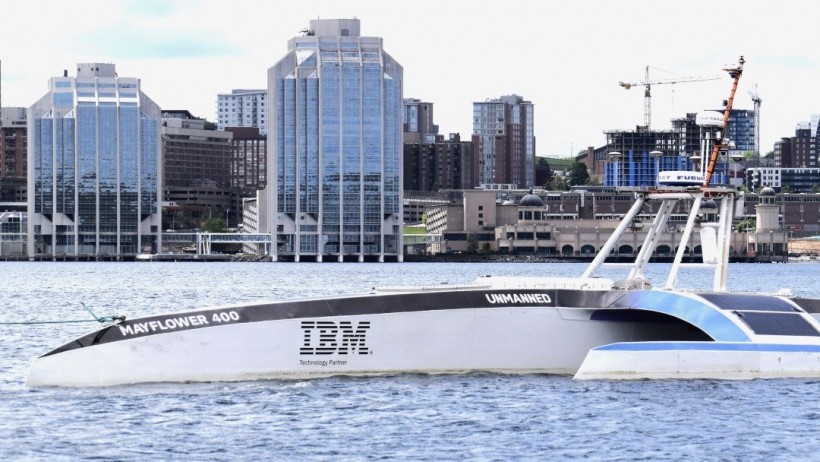As we celebrate World Ocean Day, Dartmouth celebrates the arrival of an autonomous ship.
Dartmouth’s Centre for Ocean Ventures and Entrepreneurship has an unusual and unplanned visitor: the Mayflower Autonomous Ship, which is recreating the 1620 transatlantic crossing of the famous pilgrim ship the Mayflower.
The ship, which is driven by a pair of solar-powered electric motors, docked at COVE June 5 instead of its intended destination in Plymouth, Massachusetts because of technical problems.
The Mayflower is the brainchild of British businesspeople Brett and Ayse Atauz Phaneuf, as well as Norwegian University of Science and Technology Professor Fredrik Søreide. Ayse Atauz Phaneuf is the president of Connecticut non-profit Promare, which promotes marine research and exploration, and Brett Phaneuf is a board member.
Promare created the Mayflower in a joint project with computing giant IBM with the goal of advancing autonomous ship technology.
“We are continuing to stress all the systems to their limit and are learning a tremendous amount about how to design, build and operate autonomous vessels,” said ProMare on Twitter in May after announcing the ship had developed problems with the backup generator it relies on when the weather is too cloudy for solar power.
The Mayflower’s freshly completed transatlantic voyage is its second attempt. The first, which began in June of last year, was scuppered after a different series of technical glitches.
After the generator problem from May, Promare said it had switched control of the Mayflower over to a backup computer.
On the Mayflower’s website, Promare says that removing the need to accommodate a human crew allowed it to make the design of the ship dramatically more efficient, with the hull needing only to be large enough to hold the engines, power and control systems.
And crucially, the Mayflower’s artificial intelligence system can function without internet access, allowing it to respond to problems like changing weather conditions on the fly.
